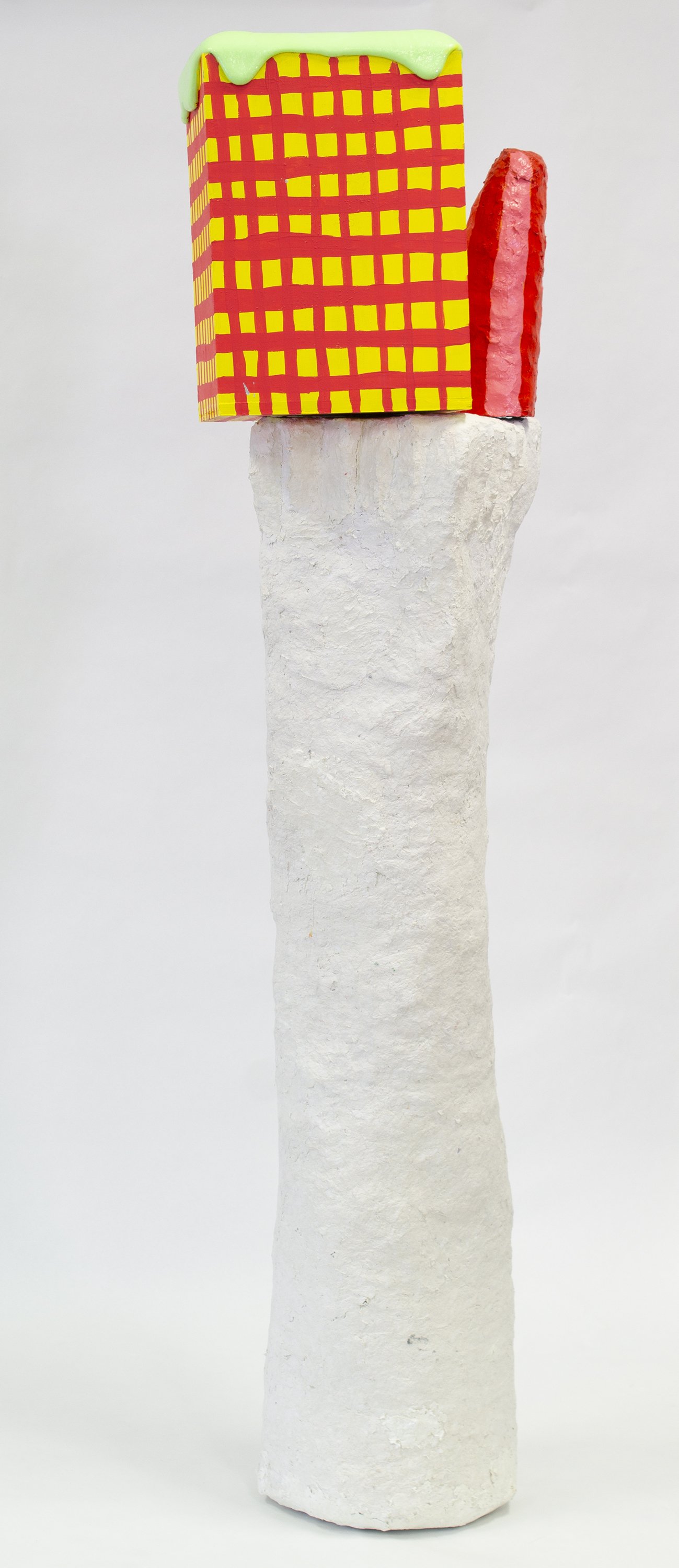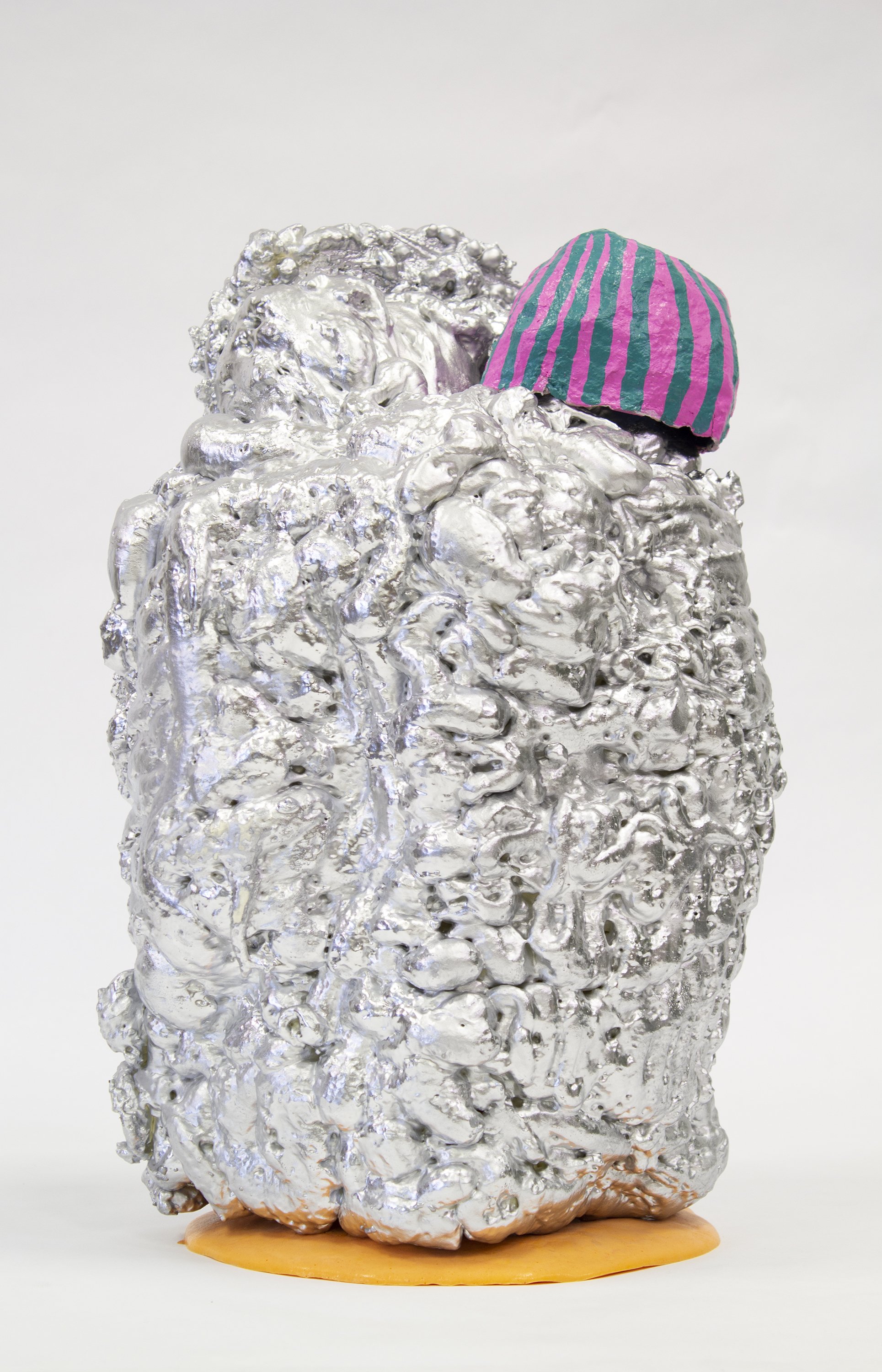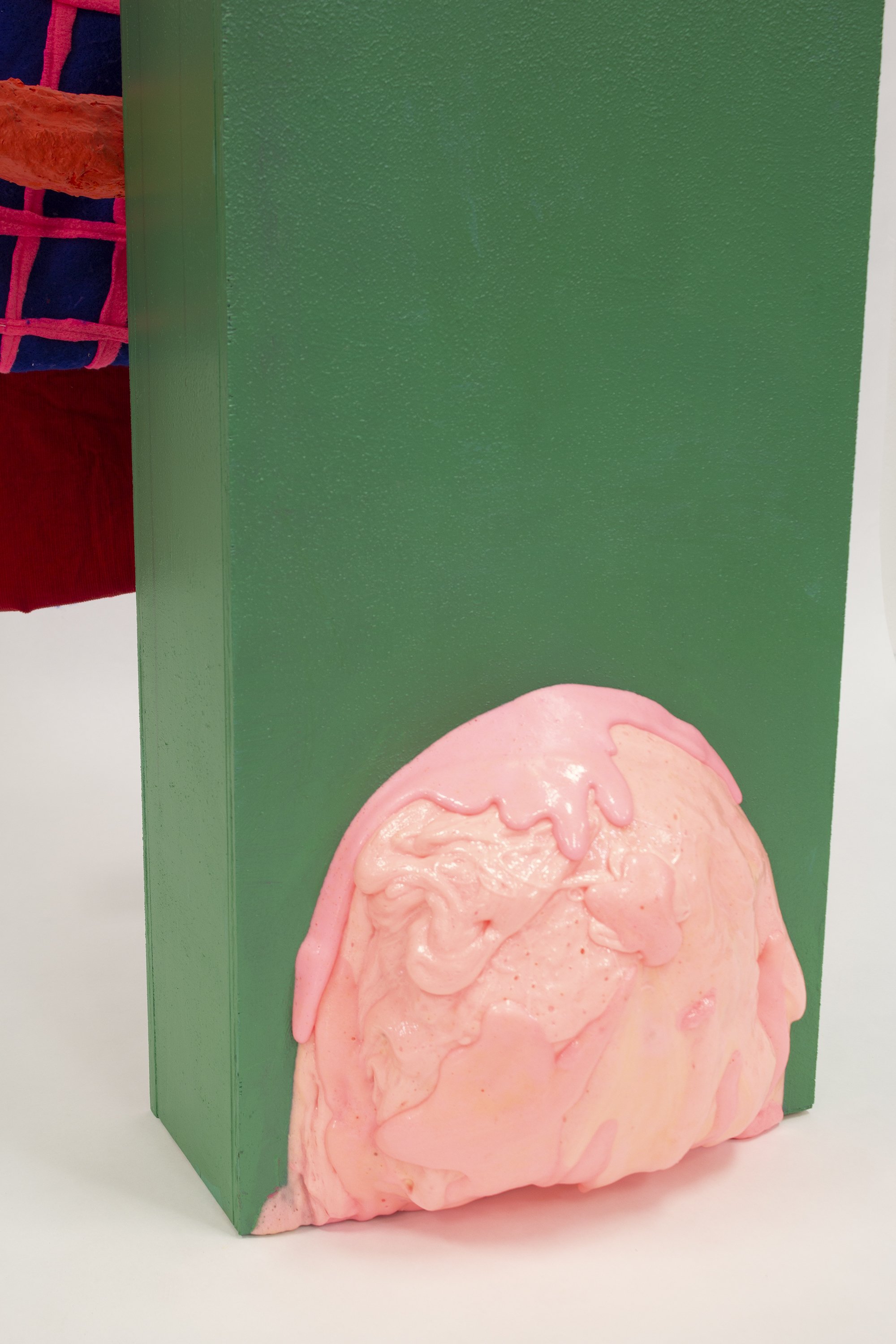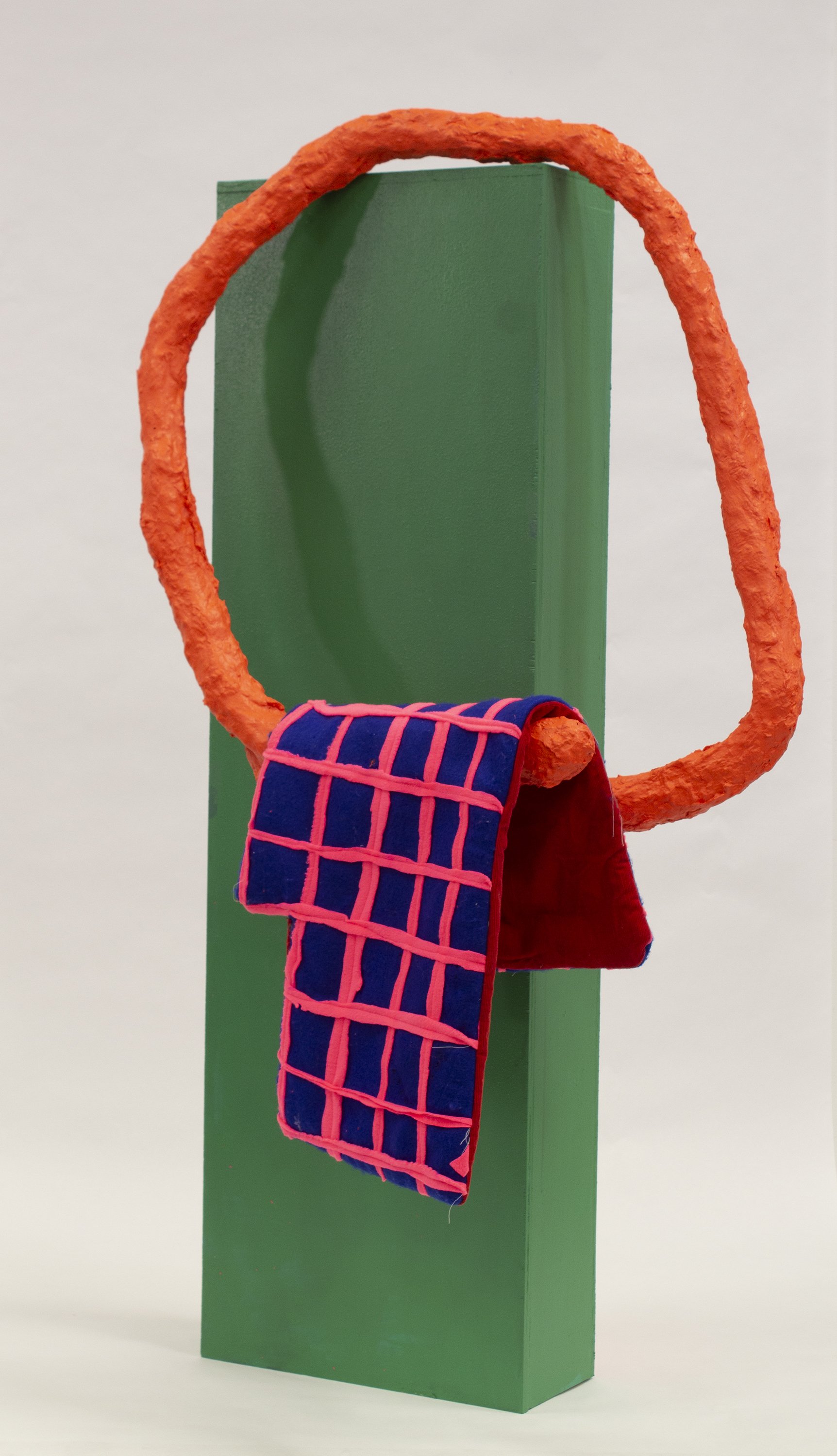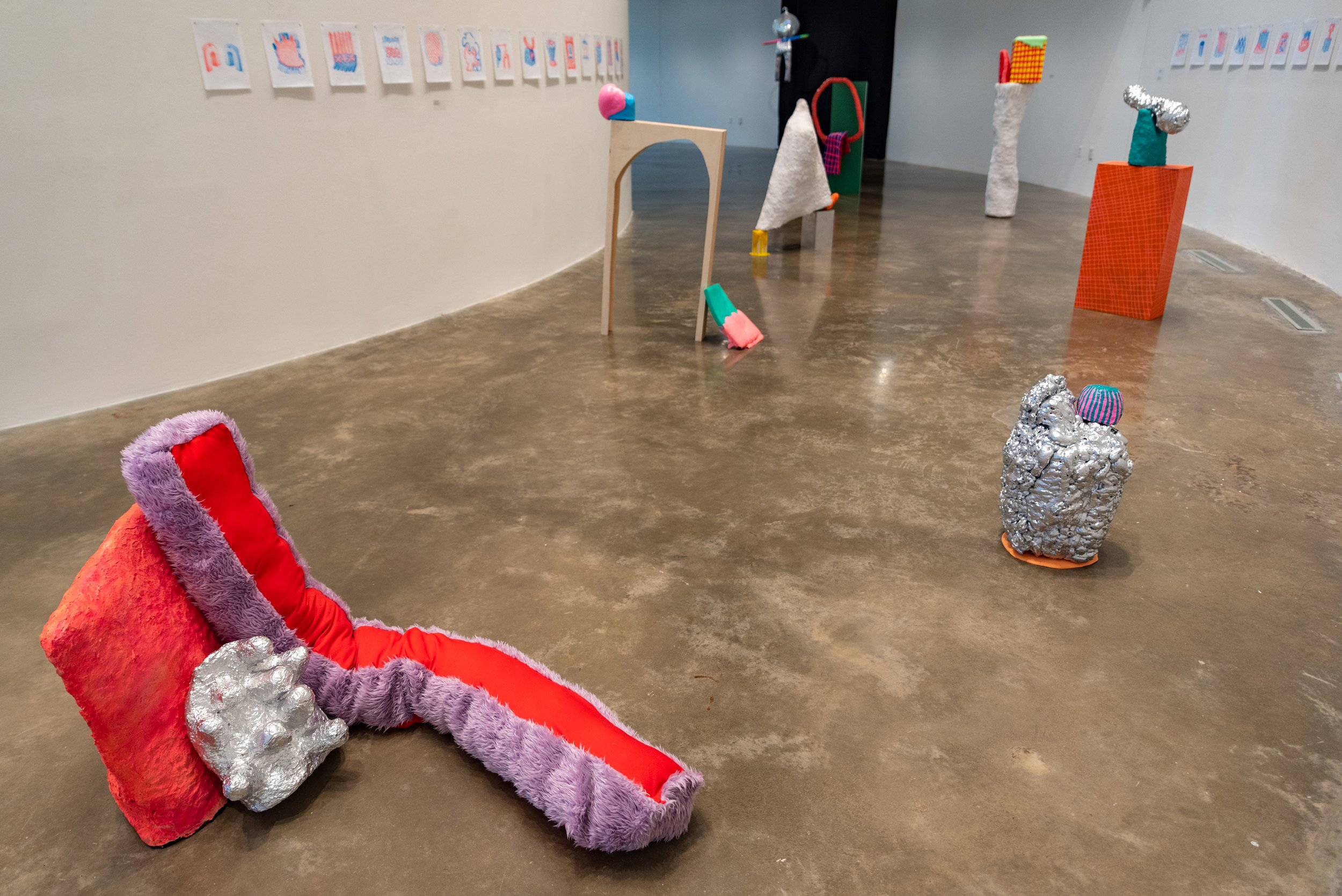Matthew Russo (b. Worcester, MA; lives and works in Washington, DC) earned his BFA in Painting from Lyme Academy College of Fine Arts, Old Lyme, CT, and his MFA from American University in Washington, DC. As part of his art education, he studied in Prato, Italy, where he focused on traditional forms of painting and printmaking. His work actualizes theoretical research into sculpture, painting, and drawings. He uses abstraction as a language to dissect the relationships between objects, materials, and their roles in gender, consumerism, class, and personal history.
Russo has recently exhibited his work at Dodomu Gallery in Brooklyn, NY, and But, Also in Washington, DC.
Artist statement
Rooted in the scholarship of Objects and Things, my practice explores these notions as concrete knowns and abstract unknowns. Abstraction becomes a tool I can use to dissect, transform, and juxtapose known qualities of the objects and materials I source to create my work. The forms I develop are esoteric versions of material reality and personal history. They come from scraps of broken buildings, garbage I pick up, plastic toys, rusted-out fences, cartoons, advertisements, architectural motifs, art historical images, and the odd screenshots on my phone. The abstraction of these objects allows me to participate in a discourse surrounding material relationships to gender, class, and consumerism through a lens of personal experience.
These abstractions live in the metaphysical place of my experience where they become twisted, clumsy, brightly colored, impotent, rough, soft, plastic, sensorial, and animated. In the distance created by abstraction, questions arise about how I come to know my material reality through visual and learned experience. I can ask what extraneous non-physical qualities or ideas are bundled up in this material, object, or thing and how those can be implemented, opposed, or developed further. This theoretical work is actualized in the creation of both sculptures and 2-dimensional work.
When working flatly with painting and drawing, I develop images that float between abstraction and representation. I confuse space, alter forms, and re-work the image to create a sense of a trajectory and history of the objects, things, and spaces portrayed. While working sculpturally, I use fabric, foam, resin, plastic, wood, paper pulp, and other materials with specific processes, physical traits, and extraneous qualities. I weigh these elements against each other to develop relationships that confront and confirm what I know about them. This confrontation and confirmation produce things that feel equally unknown.
